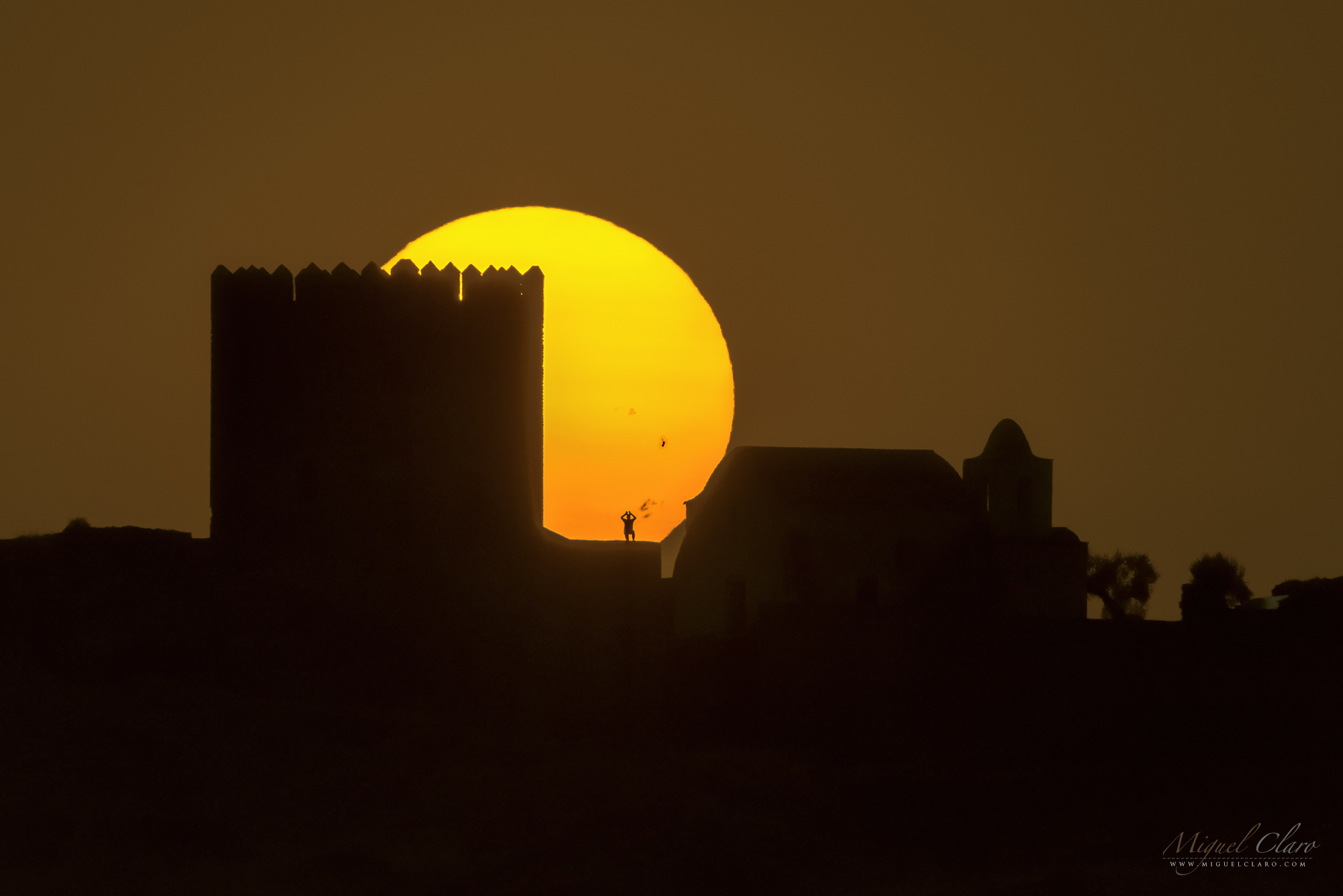Skywatcher Sees 3 Monster Sunspots During Intense Solar Storm (Photo)

Miguel Claro is a Lisbon, Portugal-based professional photographer, author and science communicator who creates spectacular images of the night sky. As a European Southern Observatory photo ambassador, a member of The World At Night and the official astrophotographer of the Dark Sky Alqueva Reserve, he specializes in astronomical "Skyscapes" that connect Earth and the night sky. Join him here as he takes us through his photograph "Skywatcher Observing the Largest and Strongest Sunspot in a Decade."
A skywatcher uses filtered binoculars to observe a majestic group of sunspots just a few minutes before the sun sets behind the Castle of Noudar in Barrancos, Portugal.
This carefully planned single shot was taken on the evening of Sept. 7. I stood about 1.3 miles (2.1 kilometers) away from the castle and captured this view with a 600-millimeter telephoto lens. Three large sunspots (AR2679, AR2674 and AR2673) are visible on the sun's disk behind the silhouette of a man. [Photos: Stunning Photos of Solar Flares & Solar Storms]
On the day before this photo was taken (Sept. 6) at 12:02 p.m. local time (1202 GMT), the sunspot AR2673 (seen at the right side of the man's silhouette), as large and wide as planet Earth, unleashed a major X9.3-class solar flare, the strongest in more than a decade.
A few hours later, the orbiting Solar and Heliospheric Observatory, a joint project between NASA and the European Space Agency, observed a coronal mass ejection — a blast of solar particles — coming from the site of the solar flare.
Solar wind particles from the monster flare reached Earth, and its impact produced a severe G4-class geomagnetic storm. X-rays and ultraviolet radiation from the blast ionized the top of Earth’s atmosphere, causing a strong shortwave radio blackout over Europe, Africa and the Atlantic Ocean, according to the Space Weather Prediction Center.
Included in the great Alqueva Dark Sky Reserve – the first site in the world to receive the "Starlight Tourism Destination" certification – Noudar Natural Park is located in a farm estate called Herdade da Coitadinha that spreads across 1,000 hectares near the village of Barrancos (Alentejo, Portugal) at the border with Spain. The road from the park's entrance to the Noudar Castle goes through an extensive holm oak grove ("montado") area, ending with a majestic view over the water. This medieval fortress was very important for border defense against the kingdom of Castile during the early 14th Century. In Noudar, life presents itself in a state of wilderness and absolute purity.
Get the Space.com Newsletter
Breaking space news, the latest updates on rocket launches, skywatching events and more!
In a video uploaded to Facebook, I explain how I planned this shot in my native language of Portuguese.
To see more of Claro's amazing astrophotography, visit his website, miguelclaro.com. Follow us @Spacedotcom, Facebook and Google+. Original article on Space.com.
Join our Space Forums to keep talking space on the latest missions, night sky and more! And if you have a news tip, correction or comment, let us know at: community@space.com.









